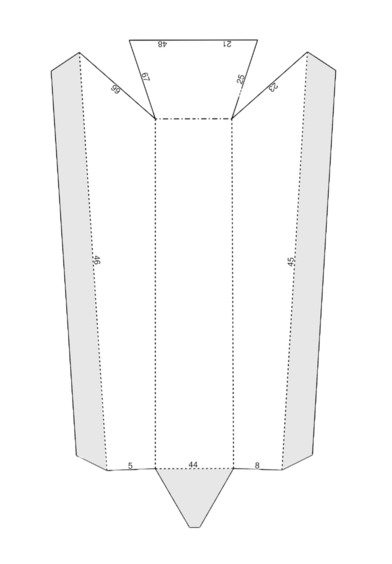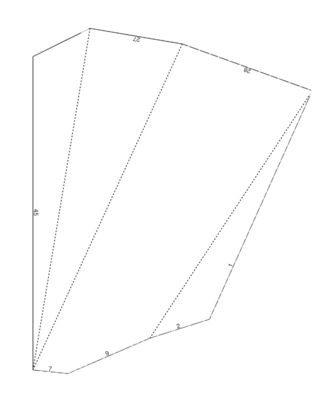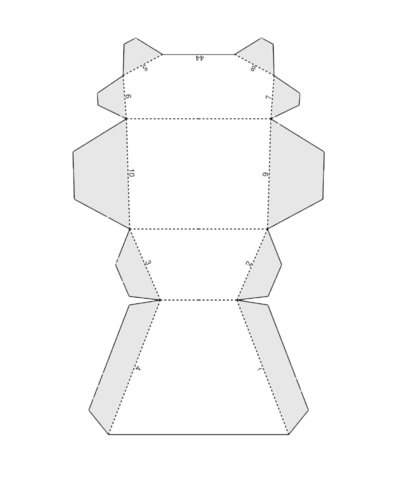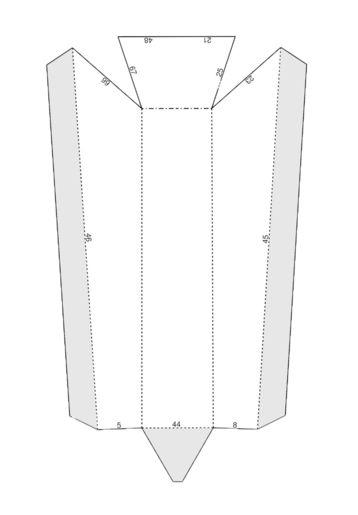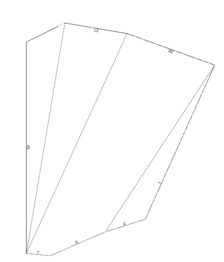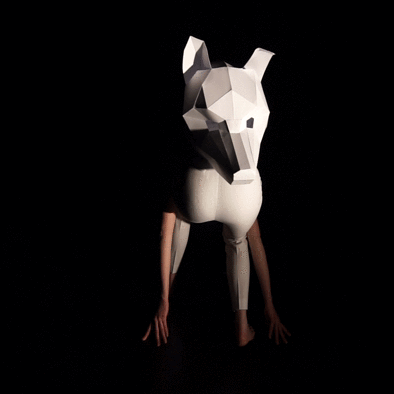Wandering in the Desert
“We all begin as a bundle of bones lost somewhere in a desert, a dismantled skeleton that lies under the sand. It is our work to recover the parts. It is a painstaking process best done when the shadows are just right, for it takes much looking. La Loba indicates what we are to look for -the indestructible life force, the bones.” (Pinkola, 1992, p.43)
Welcome inside.
This all begins in the night,
with the call of the full moon.
I’m looking for bones,
I trust the stars and I sing next to the fire,
I’m becoming the wolf to look for the woman,
would you like to join me?
(Follow the arrows)
Image: Structure and possible paths of the Exposition Wolfe and Libertad 2019 by Laisvie.
This project was developed during the COMMA Master of Choreography, a joint program between Codarts and Fontys in The Netherlands (2017-2019), with the coaching of Victoria Marks, Rosanna Irvine and Liat Magnezi.
NOW, KEEP ON WANDERING AND COLLECTING BONES...
Presentation
Wolfe and Libertad is a practice-led research project that combines choreographic and cinematographic ways of working with the aim to locate sources of female strength. Therefore, one strand of the project seeks to develop an expressive device from the kinetic interplay between dance and video projection. The other finds creative energy in the voice of young women instigating social change and in a wolves-inspired bodily state derived from a somatic exploration inspired by the tale La Loba(Wolf Woman) presented by Clarissa Pinkola in the book Women Who Run With the Wolves (1992). This tale is also embodied by the dancers using sign language transformed into choreography by enhancing its kinetic aspect.
The project provokes tension between the notion that being a woman is a historical construction (Beauvoir, 2011, Butler, 1990) and the experience of becoming (devenir) an animal body. In this sense, the project has a feminist approach that, beyond a critique of the patriarchal system, focuses on the forces that emerge from the female world. In this manner, the figure of the wolf functions as a metaphor, simile, and/or personification to investigate female strength. Becoming the wolf to find the woman.
1. About the artist/researcher leading this project
It is important to contextualise this project in relation to my own history and background in order to clarify my fascinations and different interests. My undergraduate studies are in psychology with an emphasis on psychoanalysis, and my thesis researched the experience of the armed body in war. While in University, I fell in love with movement thanks to discovering contemporary dance, yoga and circus, and since I graduated in 2005 I devoted myself to the scenic arts. I co-founded and direct ConCuerpos, the first inclusive dance company in Colombia where I have been able to integrate my previous studies in artistic, educational and research projects. The exploration regarding sign language and dance comes from that universe. My interest in using video projection in dance performance comes from my independent practice of making video-dances. Even though I love this art form, I was missing the live experience of physical bodies on stage. This led me to do a Specialisation in Multimedia Creation where I was introduced to real-time controlling tools for video projection. That is why in this project I use knowledge and experiences from such diverse fields that find a way to come together around the relationship between wolves and women.
The title Wolfe and Libertad, which is the name of the main research project, and at the same time, the name of my latest artistic work, refers to my own name. My mother is Lithuanian and my father is Colombian, so, Laisvie, my first name, means liberty in Lithuanian and Ochoa, my surname, means the wolf in Basque. Libertad is the Spanish word for liberty and since I grew up mainly in Colombia I decided to include the Spanish word in the title. I use the spelling of Wolfe (wolf + e) as a way to create a character like Libertad. Wolfe and Libertad then, are the personification of two aspects of my own identity, who look at each other to recognise themselves as the same potent female force.
2.Methodology and methods
Regarding the methodology, since this is a practice-led project in the field of Artistic Research, the production of knowledge emerges from the constant cycle of making and reflecting. “Academic research utilising this approach is conducted in dialogue with the researcher’s creative production, the emphasis of which is equally placed on theory and practice as well as the reflection and documentation of practice.” (Makela et all 2011, p.4) Therefore, the creation process and its thorough documentation are the main research methods, alongside the presentation of the critical reflections that shape the decision-making process.
This also means that the artistic outcomes embody the answers to the research question (Idem p.5) and that this Exposition is a place were the significant traces of the process can be presented in a multimodal way.
The actions done for this project are: movement explorations (contact improvisation, somatic improvisation), choreographic work (creation of movement phrases, creation of improvisation scores and using sign language to write dance movement), experimentation with video editing and controlling tools for video projection, desk work that includes the review of diverse sources (books, articles, movies and videos), and reflection and writing exercises.
As this project deals with a high level of complexity and involves several disciplines, I have the following guidelines:
Intermediality: in between making and reflecting, in between dance and cinema, in between presences, in between actions, words and images.
Listening with the third ear: pay attention not only to what is coherent, rational and linear but also to what grows without being cultivated, what is wild. This notion is coming from psychoanalysis, especially developed by Theodor Reik (Lagaay, 2008, p. 55)
Openings: use free association as a way to find subjective meanings, allowing complexity, serendipity and paradoxes.
Move first, think later: this is the way to maintain the practice leading the research. If I am stuck, I go back to the body to find the way again.
3. Navigation
It is important to say that the present Exposition does not present a linear text, but offers different paths for the viewer/reader to navigate through the information with a level of interactivity that relates to the multimodal approach of the project. Therefore, it includes photos, animated images, videos, audios and texts in a clear but open design that reflects the world created through the project. The viewer/reader can decide what to read, watch or listen to and more importantly, at the end of each page must decide between two options to continue the journey. The pages visited will depend on the choices, which entails that some will be missed out but also makes the experience unique for everyone in each visit. Here the map of the Exposition:
Key Terms and Definitions
LOOK UP FOR THE LAST BONES...
Aims of the Project
The project seeks to locate sources of female strength from a wolves-inspired bodily state as well as from an expressive device that works with the kinetic interplay between dance and video projection. This is the main goal and therefore the research question.
Specific aims:
+ To locate other sources of female strength such as the speeches of young women instigating social change. This introduces an exploration of the voice and the spoken word as part of the moving body in terms of its kinetic qualities.
+ To repurpose psychoanalytic concepts as investigation methods and creative triggers for embodied and somatic practice.
NOW IT IS TIME TO COME BACK TO THE GROUND TO FIND THE PATH
The Research Trajectory
I started my creative path by addressing the concept Extimacy proposed by Jaques Lacan and developed by Jaques Allan Miller. This concept refers to the blurry relationship between the interior and the exterior and has several acceptations. I focus on one: “Extimacy says that the intimate is Other -like a foreign body.” (Miller, 1994 p. 76) In other words, those cases when we perceive some aspects of ourselves as external.
This inspired me to do creative writing exercises and movement improvisations from my own hidden aspects. In this way, I found a wolf-like bodily state that, even though was unexpected, fascinated me. Since the beginning, Wolfe, as I call the character that I have been developing from that state, was showing a special strength that I recognised as female. In general terms, this journey has been about getting closer to, and understanding ‘my inner wolf’ as a source of female strength.
My first association was to the tale of Little Red Riding Hood since its characters are a wolf and a woman. This motivated me to do a critical review of the story that finally questioned that first association. While doing this theoretical action, I was also working on an artistic outcome, the video-dance Becoming, where I present a deconstruction of the tale and I started to explore the expressive possibilities of projecting a body on the body of the dancers. Also, I introduce a wolf paper mask that became quite central in the project. Meanwhile, I offered a video-dance workshop where I was able to study the interconnection between choreography and cinematography. From this workshop, I was able to organise some principles from the audio-visual field that became useful in further experimentation with live video projection. This developed into a ‘vocabulary,' still in progress, presented in videos of the possible relationships between a physical and a projected dancing body, which is the basis of the expressive device I am interested in. In this stage of the project, I did a collaboration with Niels Jansen, a creative technologist who has a computer science background. Specifically for this project, Niels developed a computer program to do live video projection mapping, which allows me to do live motion tracking on moving dancers.
The literature review done for Becoming, led me to Clarissa Pinkola’s Book Women Who Run With the Wolves (1992). Pinkola’s argument that women and wolves have a lot of characteristics in common such as being intuitive, possessed of great endurance and being very brave, became far more interesting to my research. Pinkola also argues that both women and wolves have been misunderstood, persecuted and overpowered in real and symbolic terms throughout history due to the fear of their wildish nature. Reading Pinkola’s theory re-signified ‘my inner wolf’ and opened a new door to explore my feminine identity. I found her association key to continue shaping the research and I moved forward to my next artistic residency where I created the stage piece WolFloW.
In that process, I became interested in finding ways to make ‘the inner wolf’ emerge through movement and it was the opportunity to refine my previous discoveries regarding the relationship between dance and projection. For example, I included an exploration with a large origami sculpture in order to have other paper elements beside the mask that could also be a potential projection surface. In the beginning, this element was supposed to be secondary but very organically within the process, it became quite central. From the transformation of this big paper structure, new dramaturgic aspects emerged. I treasure this serendipity finding because it relates to the meaning of wild that I am addressing to; wild as something that grows without being cultivated (Oxford dictionary online, n.d.). The actions to transform the paper from a fixed geometrical structure that gets disassembled, reconfigured and finally torn apart, can be seen as a metaphor of how feminist movements have been questioning the patriarchal system in order to transform the role of women in society to gain more rights and freedom.
However, while the dramaturgy of the paper was gaining focus, the development of an expressive device from the tension between projected and live dance was getting lost. Also, the body of the wolf-woman started to vanish and the movement materials became too clean and elegant, lacking in wildness. Therefore, I decided to leave this experimentation aside and come back to the kinetic interplay between imago and physical presence and the somatic experimentation. I use the term somatic to describe the type of movement-based inquiry that I have been doing because my approach shares many of the principles that other somatic practices have. For example, it is a practice that starts from a deep awareness of the present moment in movement, it is an inquiry “experienced and regulated from within” (Ferris Lester, 2017, p. 31) and uses kinaesthetic and proprioceptive sensitivity (International Somatic Movement Education and Therapy Association, n. a.) Also, as other somatic practices, mine has been informed by a physiological understanding of the body, yet experienced in a manner which is creative and intuitive (Mullan, 2014, p. 254)
The understanding of Wolfe as a personification of the female wild nature that I could locate through the body was interrupted by the ideas of Judith Butler and her critique of the binary distinction between genders. Her proposal questions defining womanhood through concepts such as nature or essence. So, a new question emerged; how to address female strength if The Woman, as a unitary category does not exist? Reflecting on this question led me to contextualise the research discoveries from a personal perspective and to address gender as ongoing construction. Looking at my investigation from this perspective was definitely enriching and I decided to expose the old tension between nature versus nurture through the tension between body and language. In my last work, the dancer moves from her bones, muscles, blood and teeth, but also uses her voice to present sounds and words, to tell stories and to make statements. That is why the voice is part of the project as an aural element of the dramaturgy.
Derived from my readings about feminism, I discovered a lack of respect towards the voice of young women in the patriarchal society. It became important for me to listen to that particular voice and to embody the words that some young woman have said in political speeches that have instigated social and political change. I also see them as wolves, reclaiming their territory and making the whole pack move. In addition, from autobiographical methods of creation, I found some aspects of the experience of being a woman that have changed dramatically in the latest generations and some others that sadly remain the same. These two topics are expressed in the project as embodied speeches where there is an interest in giving a dance feeling to the use of voice. This was achieved thanks to the collaboration I did with opera singer Karin Deddens who helped the dancer play with different intonations, speeds and pitches.
I would like to give a special thanks to all the dancers that participated in this project in different stages: Alice Gioria, Giorgia Belotti, Ewa Sikorska, Bellaluz Gutiérrez, Daniela Gomez, Dalia Velandia, Manouk Schrauwen, Felix Feenstra and Donna Braber. Also to my peer Olga Spiraki who invited me to Greece to offer the video-dance workshop, to Suzan Lemont who open her space Pandora’s Playspace in Utrecht to do creative experimentation and to Liat Magnezy who offered me a residency in her program DinO.



